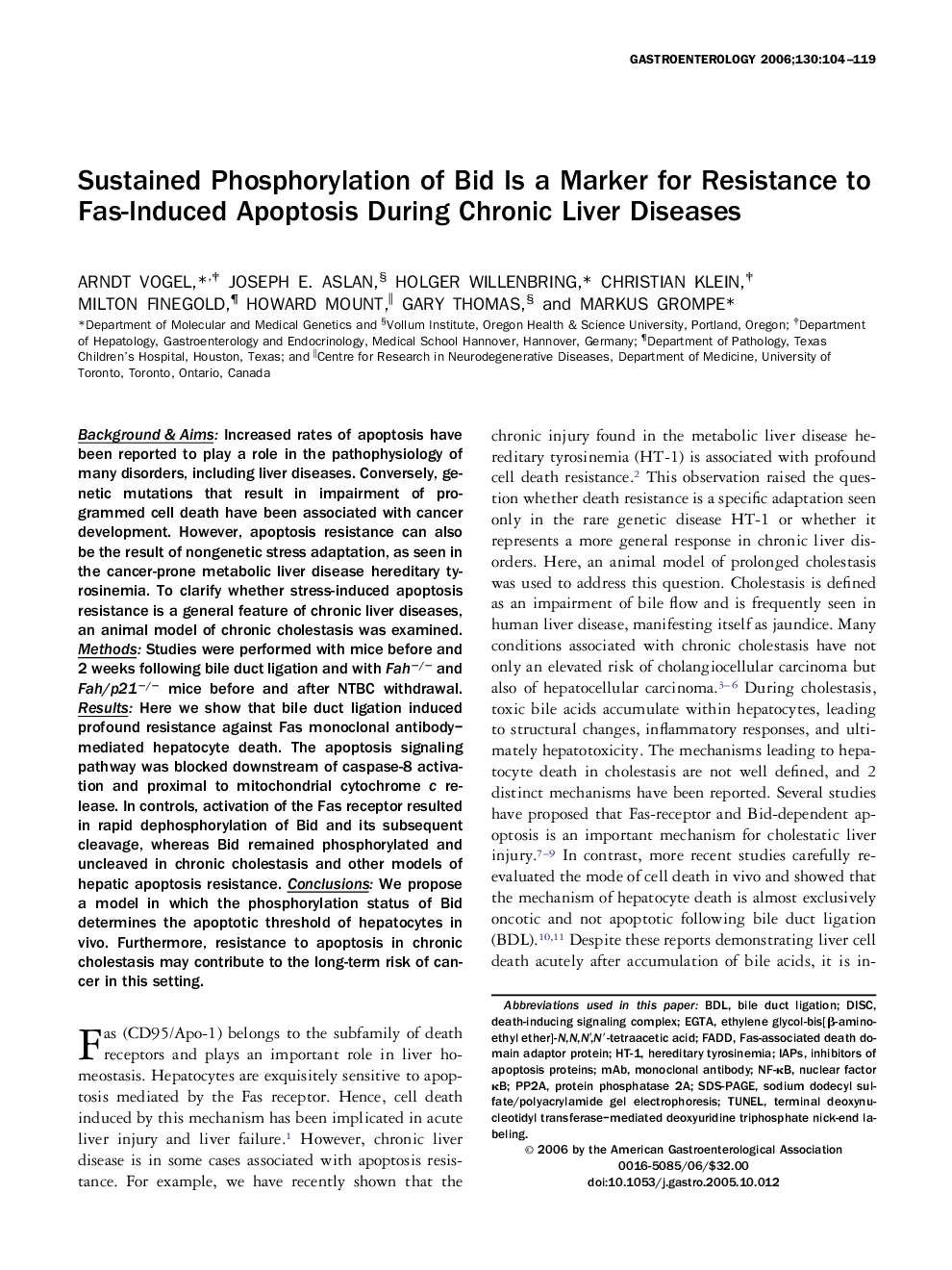| Article ID | Journal | Published Year | Pages | File Type |
|---|---|---|---|---|
| 3297990 | Gastroenterology | 2006 | 16 Pages |
Background & Aims: Increased rates of apoptosis have been reported to play a role in the pathophysiology of many disorders, including liver diseases. Conversely, genetic mutations that result in impairment of programmed cell death have been associated with cancer development. However, apoptosis resistance can also be the result of nongenetic stress adaptation, as seen in the cancer-prone metabolic liver disease hereditary tyrosinemia. To clarify whether stress-induced apoptosis resistance is a general feature of chronic liver diseases, an animal model of chronic cholestasis was examined.Methods: Studies were performed with mice before and 2 weeks following bile duct ligation and with Fah−/− and Fah/p21−/− mice before and after NTBC withdrawal.Results: Here we show that bile duct ligation induced profound resistance against Fas monoclonal antibody–mediated hepatocyte death. The apoptosis signaling pathway was blocked downstream of caspase-8 activation and proximal to mitochondrial cytochrome c release. In controls, activation of the Fas receptor resulted in rapid dephosphorylation of Bid and its subsequent cleavage, whereas Bid remained phosphorylated and uncleaved in chronic cholestasis and other models of hepatic apoptosis resistance.Conclusions: We propose a model in which the phosphorylation status of Bid determines the apoptotic threshold of hepatocytes in vivo. Furthermore, resistance to apoptosis in chronic cholestasis may contribute to the long-term risk of cancer in this setting.
